I am a programmer by trade, but I still know how to handle my soldering iron.
A previous attempt to overcome a limitation of the cheap digital cable decoders provided by Rogers was insufficient.
It was my ignorance, really: I did not know that multiplexed stereo sound in the NTSC standard also includes noise suppression. So a standard stereo decoder circuit is not sufficient, as it will introduce unpleasant, screechy audio artifacts into the output.
Therefore, I went ahead and designed a new circuit, using another chip, the TDA3833. Like the TDA7230 stereo decoder, the TDA3833 also runs from 5 volts, making it suitable for my purposes. However, it is a larger chip (indeed, at first I didn't realize that it was a non-standard DIP, so my first PCB design was wrong) and the circuit is also a little more complicated:
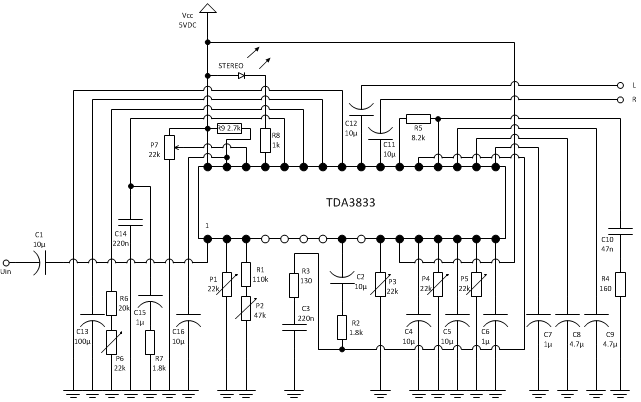
This time around, in part because of the relative complexity of this circuit, in part because I was gaining confidence in my ability to design a functioning PCB, I decided against building a breadboard prototype. I went straight ahead with the PCB design:
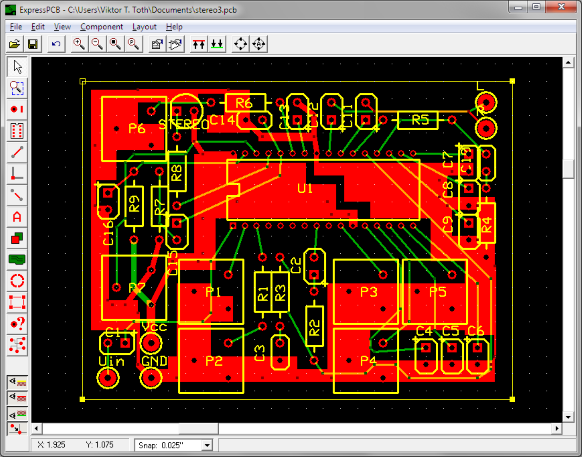
Once again, I used ExpressPCB and the services of Futurlec to manufacture the PCBs. They arrived in short order as promised, nicely prepared and packaged. Once again, although I ordered only 4 PCBs, I received more, six this time.
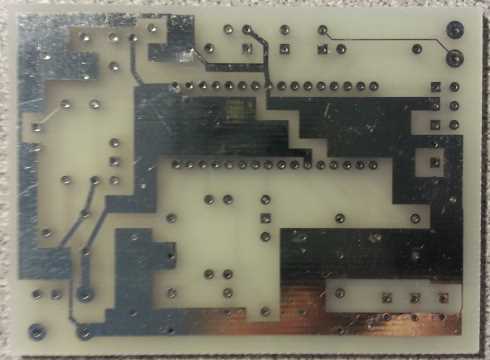 |
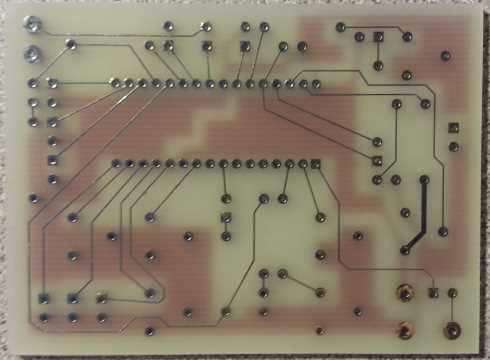 |
So I went ahead with my soldering iron and populated the first board. I was a bit apprehensive: this circuit design was completely untested. Did I make a mistake? Was the circuit correct? The documentation I found about the TDA3833 was fairly sparse. Did I miss anything?
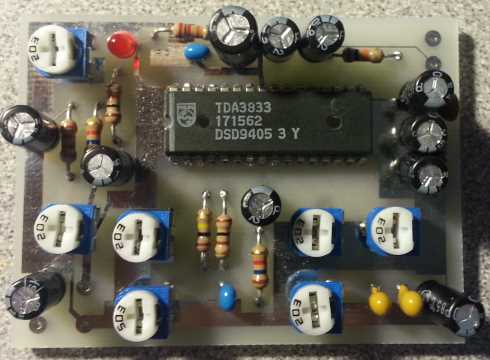 |
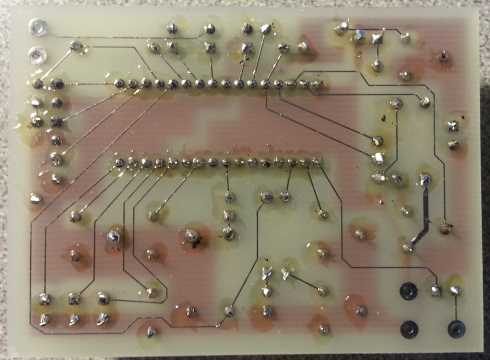 |
I should not have worried. The circuit worked the first try. The only problem was mechanical: there was no way this larger circuit board could fit inside the casing of the cable decoders. Eventually, I found a way to squeeze it in there, but I still needed to do severe "plastic surgery", like removing the sole screwpost that holds the decoder together. Ultimately, I had to resort to a rather inelegant use of Scotch tape to hold the box together but hey... it works, and it was never meant to be a beauty contest. Of course now that I know exactly what I am doing, I could design a smaller, more optimized version, but I've had enough fun already. This circuit works, and I actually do have real work to do.


